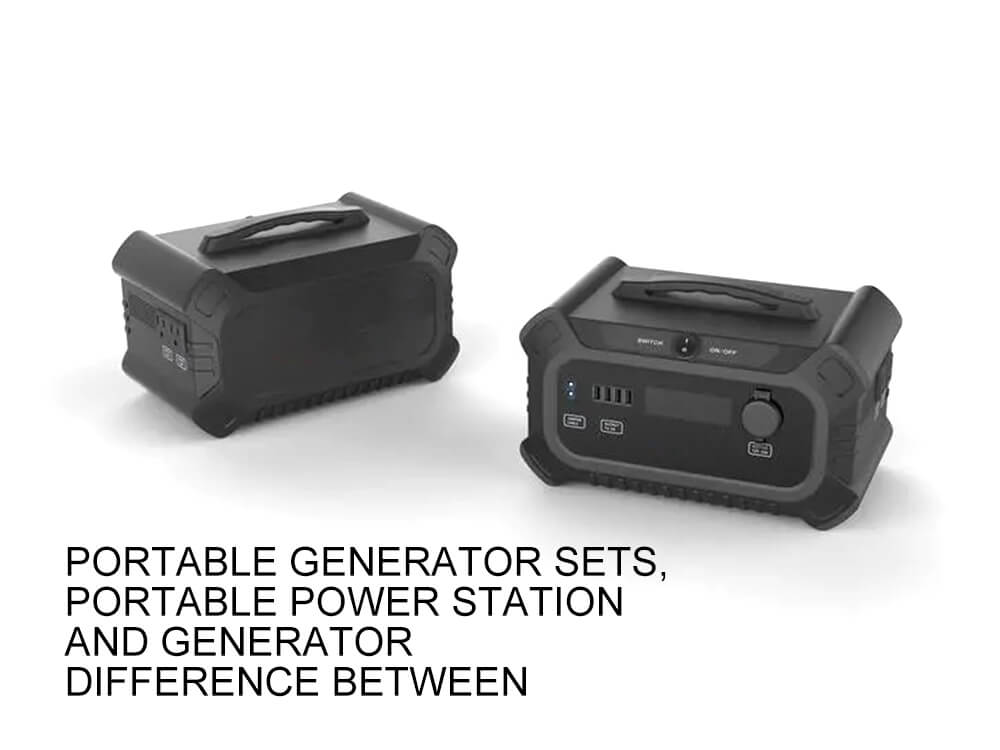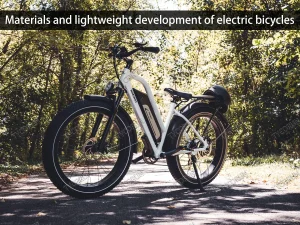Home » Battery Materials » What’s the difference between a portable power bank, portable power station, and generator
What’s the difference between a portable power bank, portable power station, and generator

Portable power bank
A Portable power bank is a small device with an in-built battery that can be charged using an external power source and store up energy that can be used later. A power bank can be charged using a USB charger commonly through an external charge port and then used to charge up a device like a mobile phone later on.
A Portable power bank comes in different sizes and power ranges with some able to charge mobile devices 2 to 3 times over. They are small and portable enough to carry in a pocket or a bag to be used when a device needs to be charged.
A portable power bank comes in different designs and can be categorized based on their charge system and overall power output.
Standard power banks
These power banks make up the most commonly used kinds with normal portable chargers which use a dedicated USB port for charging themselves and other mobile devices.
Solar power banks
Unlike the standard power banks, these are built with a portable solar panels that charges the device using solar energy. Due to the energy required to charge some of the batteries the solar panels might not always be sufficient except kept out in the sun for long periods of time. Solar power banks are also built with added USB charge ports to be used when solar charging is not available.
Wireless power banks
These is a relatively new kinds of portable power bank that can be charged using a USB port and can be used in turn to charge other devices that are compatible with wireless charging. These power banks are also built with added USB ports for when wireless charging isn’t an option.
A Portable power bank differs from portable power stations and generators in that they are smaller and can practically be taken anywhere. They also have the smallest energy capacity measured in milliamp per hour(maH) instead of the standard watts per hour.
They can also only charge relatively smaller devices with small energy requirements like mobile phones and other handheld electronics and can sometimes charge a maximum of 2 to 4 devices at a time.
They have no moving parts or internal engines which makes them extremely quiet and silent devices. Although a low-quality portable power bank can generate heat when in-use for long periods buy they are generally safe to use indoors and outdoors.
Portable power station
Portable power stations are units with built-in batteries that can be charged and used to power other electronics. Unlike a portable power bank, power stations can be big enough to power bigger electronics and can sometimes serve as backup power for home appliances.
They can be charge using a combination of different methods including USB ports, AC wall outlets, switched outlets, and other less common types of outlets. They can be charged at home using a direct connection to a power source but can also be charged outdoors using a dedicated solar panel that harnesses solar energy to charge the battery pack.
A portable power station usually has a higher capacity than a portable power bank delivering power measured in watts per hour instead of milliamps. They are usually composed of different components and built using technology that stores and releases energy more efficiently and usually with an in-built regulator to control current flow. Some portable power stations even come equipped with a screen that displays input and output energy levels, the current power level of the battery as well as other specs.
Some portable power stations are built with accompanying mobile apps that not only monitor the battery state but can control certain features like regulating the charge and stop cycles of the power station. Due to their higher capacity compared to a portable power bank, portable power stations can be used for a wider variety of charging needs including laptops, refrigerators, desktop computers, electric fans, televisions, and many more.
You can take it on camping trips to power whatever devices you would be needing including torches, electric mosquito repellents, your smart devices, radios, GPS device and other appliances you would need off the grid. A portable power station provides much more help than a power bank. The great thing about this is, unlike generators, you wouldn’t need to worry about packing fuel as they are easily solar powered or even noise pollution attracting and disturbing you and the wildlife.
They usually have multiple connective ports for charging multiple appliances at the same time. Also, unlike portable power banks, portable power stations can be used simultaneously while being charged although this is not advised as it greatly diminishes the battery lifespan.
They generally do not cause fires as they have no combustible parts or components and require very little maintenance. Unlike generators, they do not produce fumes or carbon monoxide from combustion which means that they can safely be used indoors and relatively unsupervised once they are in use.
Although they are relatively bigger and heavier than portable power banks, portable power stations can also be carried easily from one place to another. It can be used just about anywhere as it has very little health and safety risk. Unlike generators, portable power stations stores energy without needing fuel can be operated with the simple push of a button and unlike a portable power bank, it does this at a much larger scale.
Generators
Generators are devices that convert fossil fuels like propane, diesel, or gasoline into electrical energy ready for use. These devices generate electricity and can power anything from small appliances to entire buildings and houses. The internal combustion engine generates power measured in watts and can range from 10,000 watts to as much as 100,000 watts.
Unlike portable power banks and power stations, generators have active moving parts by way of the engine enabling them to produce high voltage electricity and power. They are also quite noisy due to the engine and can generate incredible amounts of heat from the burning fuel.
Also, unlike portable power devices, generators can not be charged or stored with electricity but generate their electricity using a combustion engine.
Generators are the least portable energy device and can not be easily moved around different locations. They also generate carbon monoxide from the action of bringing fuel and so can not be used indoors or in an enclosed environment.
They are also more energy-efficient than portable energy storage devices in that they supply a lot more energy per hour than any portable device can. A generator can power a house full of appliances as long as there is a constant fuel supply whereas portable power banks and power stations would need to be charged after being depleted.
With no need for charging, a generator can deliver an almost uninterrupted power supply as long as the tanks get a constant supply of fuel. But this can not be done while the generator is still on as the heat from the engine can cause fire hazards if exposed to fuel. Generators also need to be serviced constantly with the engine oil changed regularly to prevent the engine from developing faults.
Conclusion
In all, portable power banks and power stations require very little maintenance, are environmentally friendly, easy to use, and generally safer than a fuel-powered generator. Also portable power station is portable energy storage to an upgraded version of portable power bank. They can also be charged and stored with energy to be used at any time or anyplace whereas a generator would need to turned on with a tank full of fuel at a stationary location to be able to provide electricity.
Energy storage in portable power banks and power stations is more cost-effective compared to generators which despite being more energy-efficient comes with a list of health, fire, and convenience hazards.


























